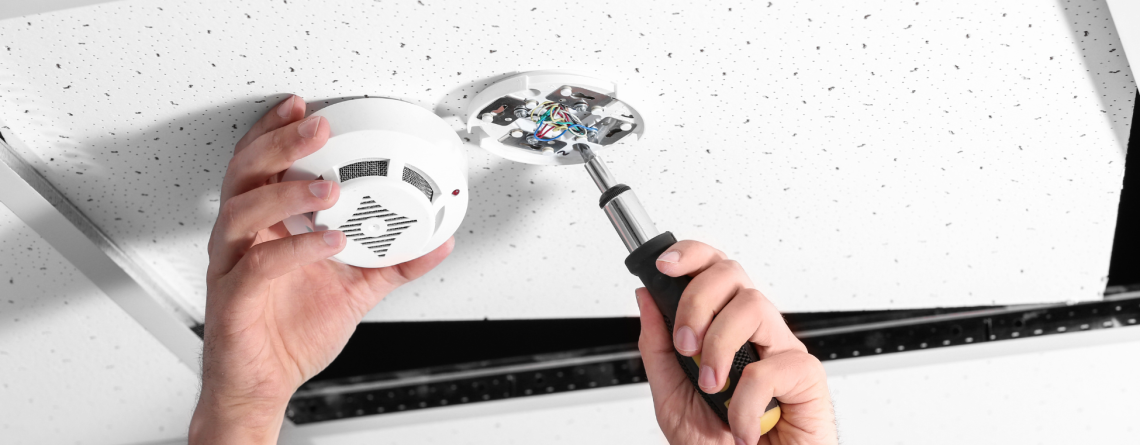An Ounce of Prevention – Home Safety Edition
Every day, hospital emergency departments are full of patients who didn’t expect to be there. Life has a way of throwing surprises our way—some good, some bad. Although we cannot avoid all the nasty surprises, we can reduce risk to increase our safety, and our homes are a great place to start.
One of the easiest, cheapest, and most effective ways to increase safety at home is to have functioning smoke alarms and carbon monoxide alarms in every bedroom and hallway. (I also have one in the kitchen that lets me know when dinner is done—or overdone.)
In the 50 years I’ve been managing real estate, two renters have died in residential fires. The homes were equipped with smoke alarms, but tragically, the occupants removed the smoke alarm batteries and put them in the TV remote controls. Without batteries, alarms don’t work.
Apparently, this situation occurred elsewhere, because now smoke and carbon monoxide alarms come with tamper-proof batteries you cannot remove and that last ten years. We used to recommend changing batteries when the time changed to/from Daylight Savings. Now, you only have to change the alarms out once a decade.
While alarms are great for alerting you to a fire, it’s best if you can prevent the fire altogether. Residential fires often start in the kitchen, so be sure to have an ABC fire extinguisher mounted on the wall near the exit. If your extinguisher is near the stove and a grease fire explodes, you won’t be able to get to it.
Fireplaces can also cause fires, either from embers landing on flammable material like carpet or draperies or via chimney fires. All fireplaces should be guarded with glass or metal mesh screens, and chimneys should have a spark arrester at the top and be cleaned every year before the first fire of the season.
I have had two chimney fires in my lifetime, and having done it wrong the first time, I now know how to put them out. Do NOT jump on your roof with a hose and try to douse the fire from above. Instead, heed the advice from my friend who happened to be a fire chief: throw a glass of water on the fire in the fireplace. The fire turns the water into steam and puts the chimney fire out instantly. (It’s always wise to call the fire department, just to be on the safe side.)
BBQs and outdoor fireplaces can also throw embers. Both should be used far enough away from the house that overhanging eaves are not too close. Eaves are not the only overhead danger—trees can also ignite. And if it’s fall with lots of dry leaves on the ground, keep an eye out for embers igniting them. BBQs themselves can also catch fire, much to the chagrin of outdoor cooks whose steaks quickly go from medium rare to crispy crunchy.
Dryer vents are another potential fire hazard. When I was a Boy Scout, I was taught to bring a couple of handfuls of lint when camping to start the campfire. It’s that flammable. Dryers produce high heat that must be released outside. If the vent gets blocked, initially, you’ll just have a less efficient dryer, but eventually, the heat could explode into flames.
Oily rags or those drenched in flammable liquids like turpentine, gasoline, or kerosine can also burst into flames—no matches required. Do not pile these rags in the corner of your garage; let them aerate so volatile fumes disperse. And if you need to store flammable materials like gas or paint thinner, it’s best to do so away from the house with plenty of ventilation.
Next week, I’ll share more safety tips.
If you have questions about property management or real estate, please contact me at rselzer@selzerrealty.com or call (707) 462-4000. If you have an idea for a future column, share it with me and if I use it, I’ll send you a $25 gift certificate to Schat’s Bakery.
Dick Selzer is a real estate broker who has been in the business for more than 45 years.






